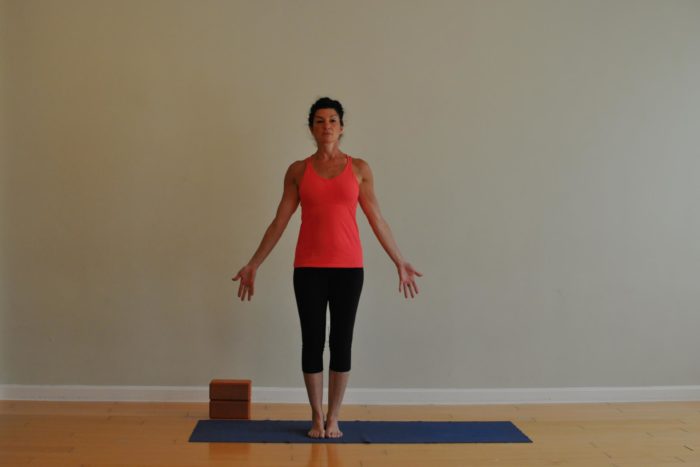
I recently was talking to someone who attends spinning classes as her primary mode of fitness. She was lamenting her lack of yoga “skill” but feeling like she needed to start yoga as a way to balance out her workouts, since they were always focused on spinning. I have these conversations a lot with people. Once people find out you’re a yoga teacher, they often go into the many reasons they have for avoiding yoga. “I’m not flexible enough,” “the classes in my gym happen at the same time as my spinning class,” “I’m not chill enough to do yoga.”
Well, what if I told you that yoga is a really smart way to exercise because it takes your body through all the planes of movement? You might say, “What the heck does that mean?” So, let me tell you.
Take a look at the image below:

This is an illustration of the planes of the body. These planes describe where movement occurs. So, if you lift your arm out to the side, that’s called abduction and it occurs in the frontal plane. If you turn your foot out, that movement occurs in the transverse plane and is external rotation. If you bend over, that’s flexion of the spine and that occurs in the sagittal plane. Now, even if you never worried about memorizing these movements and planes, understand that when you go to yoga, you’re moving through all these planes in a typical class.
Let’s compare that to running. When you run, you’re moving forward in a straight line. Your hips are moving into flexion and a little bit of extension. That continues for the entire run. If you neglect stretching afterwards, you’ve basically just worked in one plane for the entire workout. While you might feel great, it’s not a very balanced approach, which is one of the reasons why it’s so helpful to add stretching to your routine.
When I give my talks on wellness to business, I talk about this as it relates to sitting at a desk all day. You’re basically in the same position, fixed, for many hours. One of the best things you can do is move in a different plane, which, when you’re sitting with the hips flexed would be extending the hips. When you’re hunched and the shoulders are internally rotated, externally rotation would be key.
If you’re looking to create more balance in your body, moving through different planes would help. If you’re not sure if you’re looking for balance, ask yourself: how do I feel? Do you feel steady as well as a healthy amount of flexibility in your body? Do you notice certain parts of your body don’t move as fluidly as you’d like? These could be all signs that you’re doing too much of one thing and not enough of the other. The wonderful thing about yoga is that you really don’t have to know anything about the planes of the body; if you simply go to class, you’ll be taken through all the planes in just one practice.
As much as I love to teach anatomy and dive into the details, I also love to boil things down and share the essential things so that anyone can understand it as it relates to living healthy. Yes, getting on the mat is important. But if we haven’t figured out how to apply what we are doing to our life off the mat, then we’re missing out on a huge piece of the benefit of the practice.
If you like to dive into the details, my online yoga anatomy courses are a great way to learn the anatomy of yoga. I have 3 courses you can check out here:
Bare Bones Yoga Online Courses
Enjoy your yoga!
